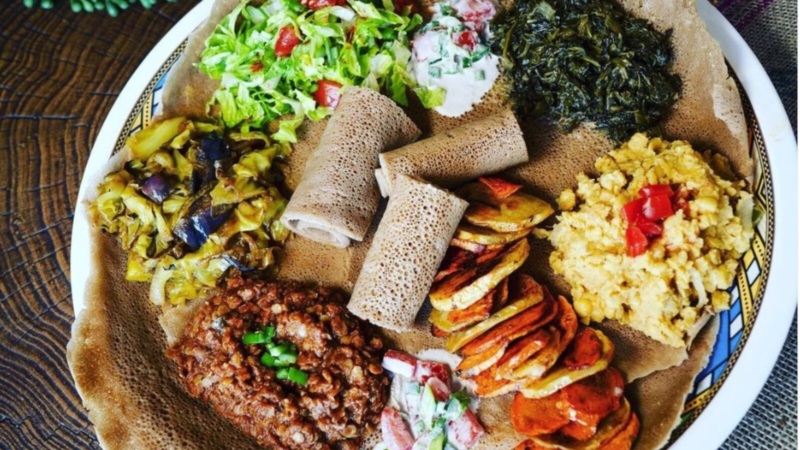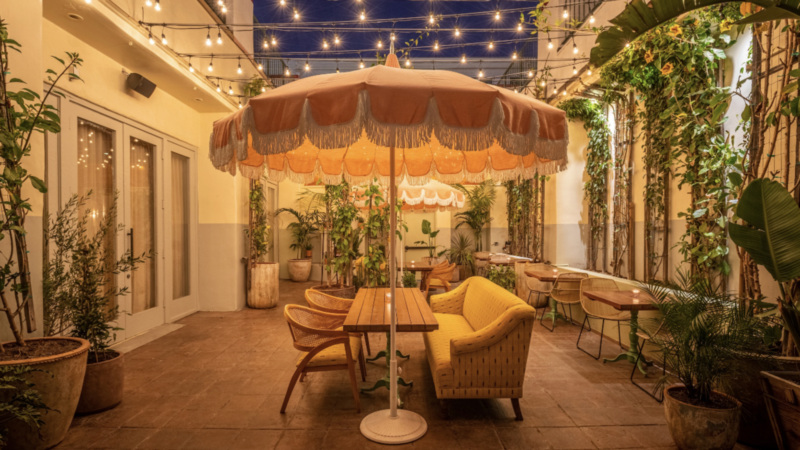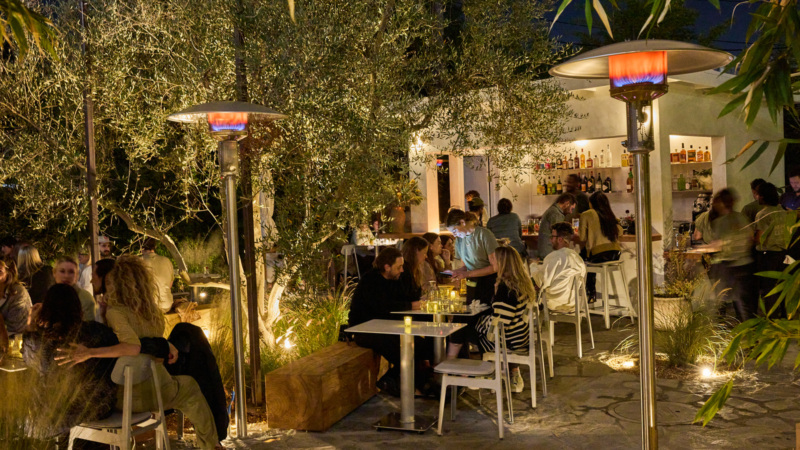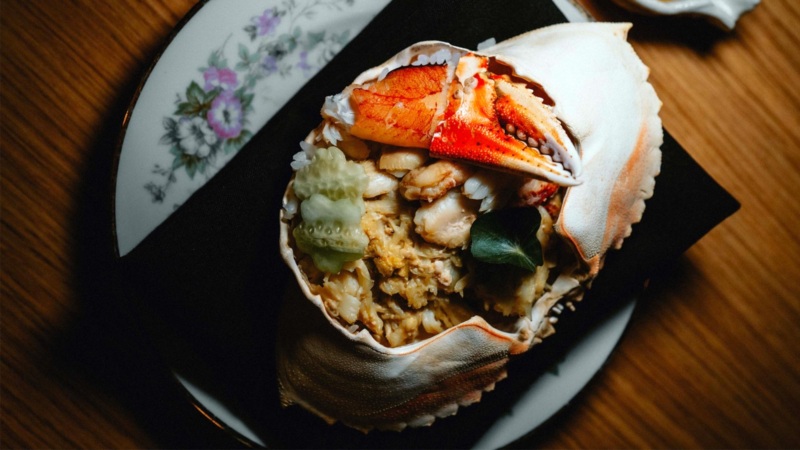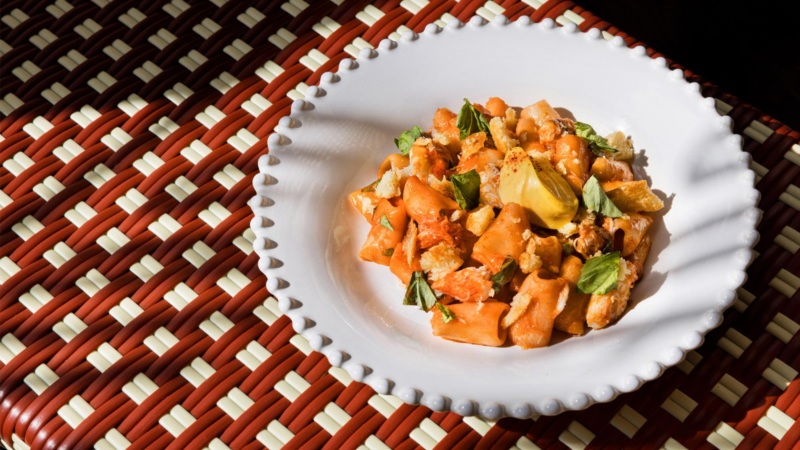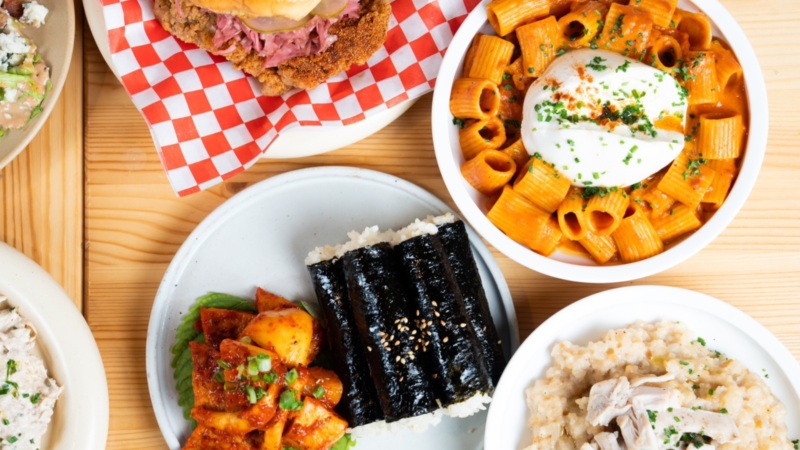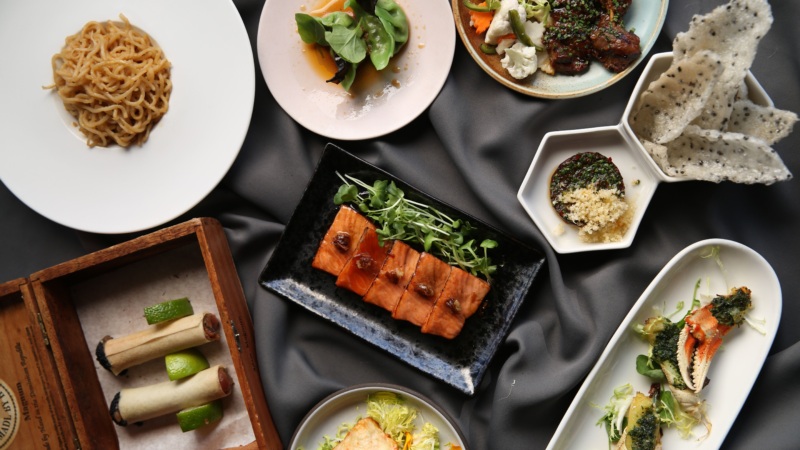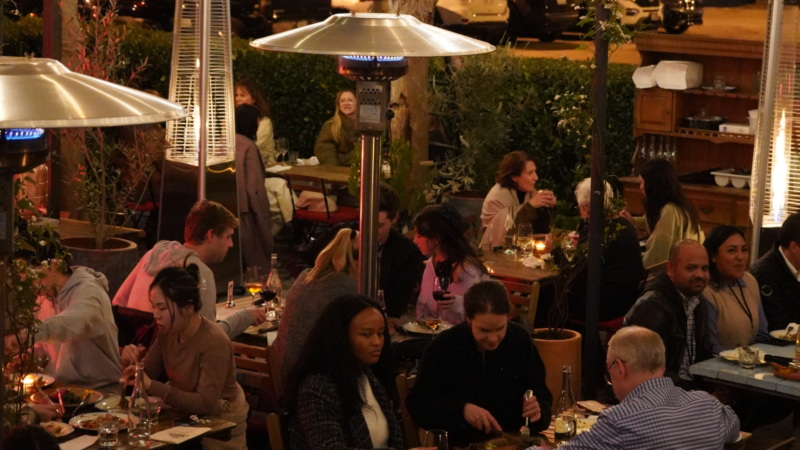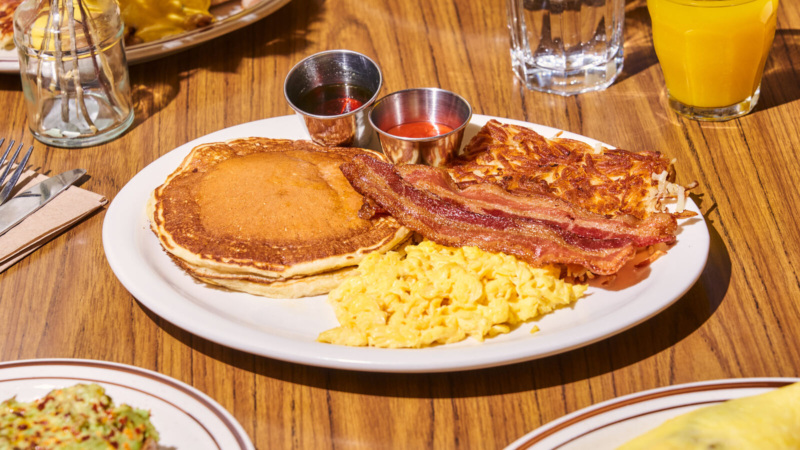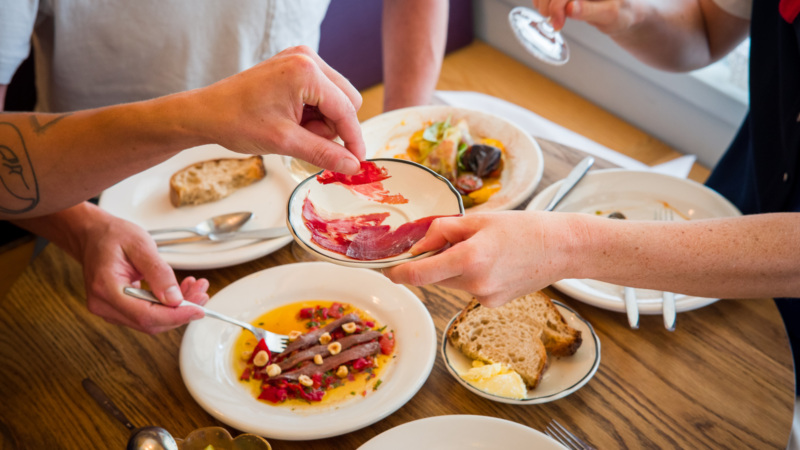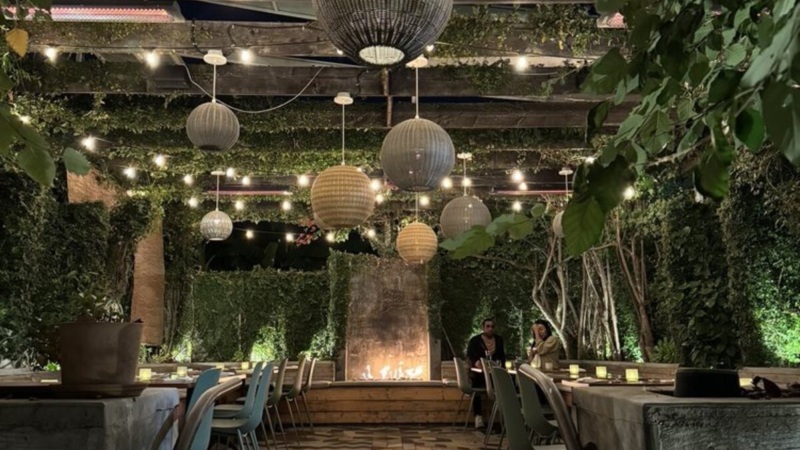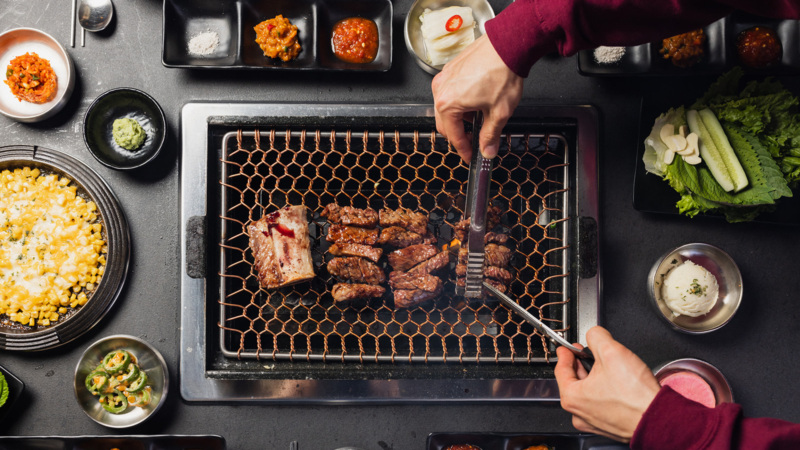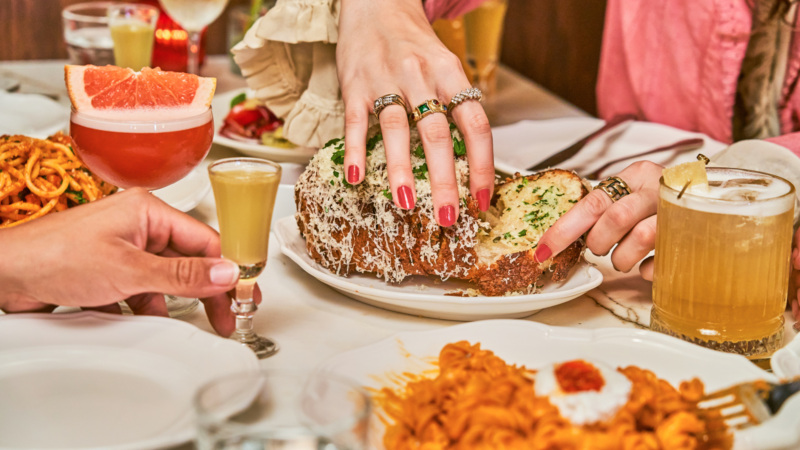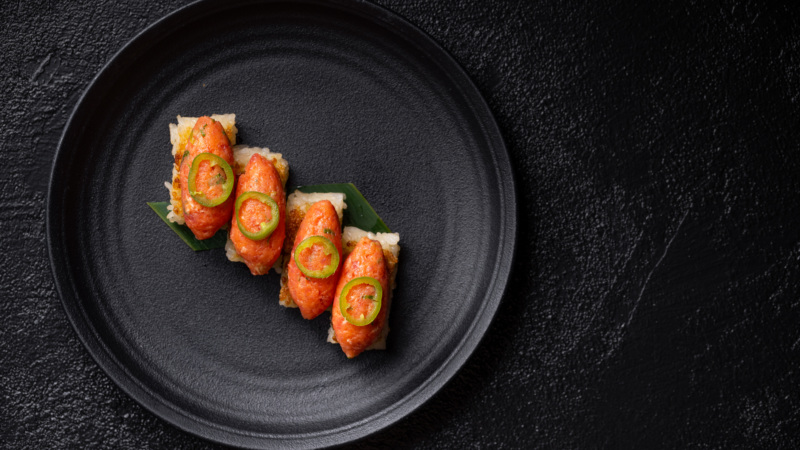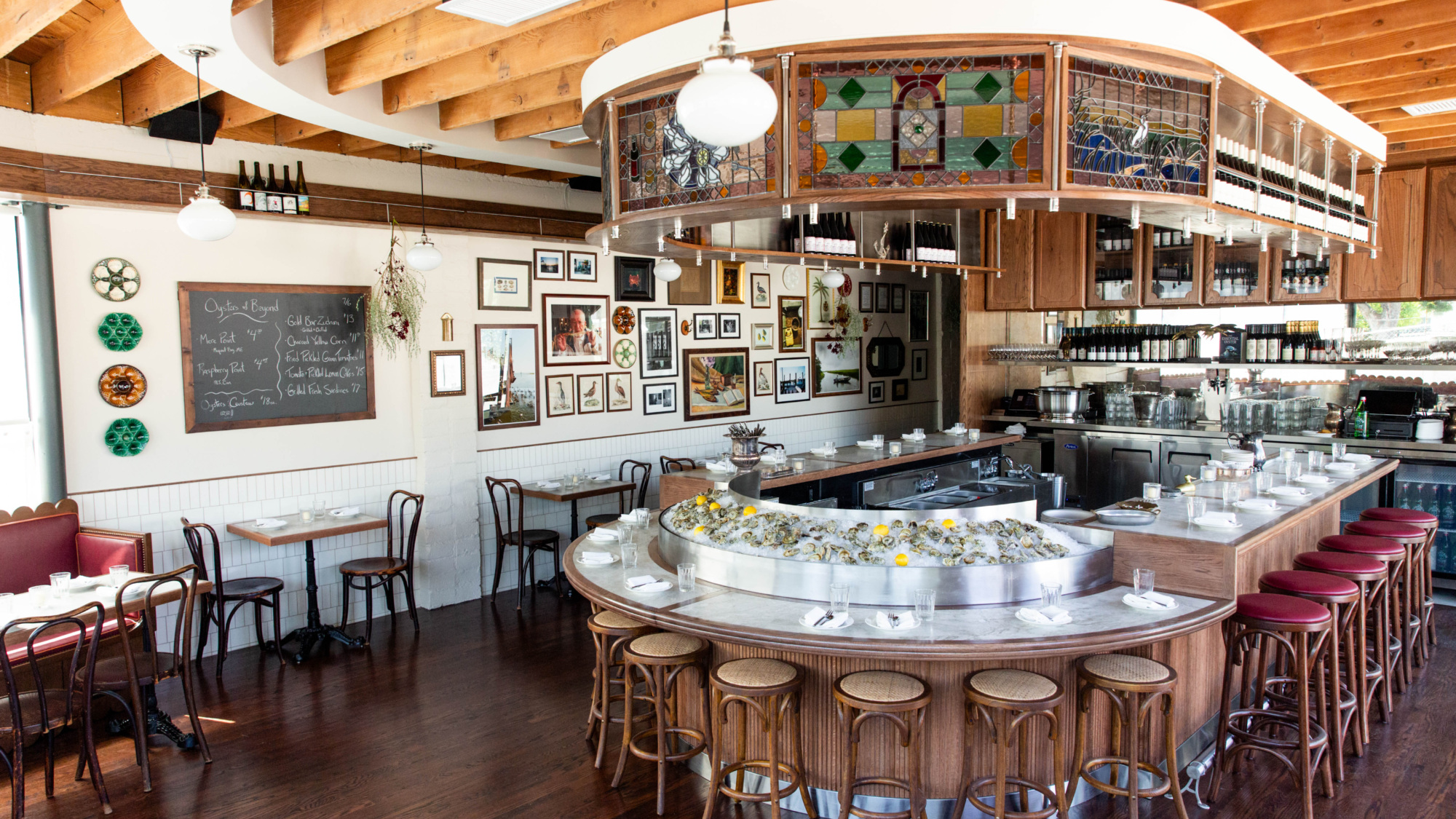
Introducing Queen St., From the Folks Who Brought Us Found Oyster
This month, Ari Kolender of the perpetually packed East Hollywood raw bar Found Oyster opened the doors to Queen St. in Eagle Rock. He describes his much-anticipated sophomore restaurant as “a classic raw bar and seafood grill” that draws from his upbringing in Charleston, South Carolina.
Queen St. doesn’t sling lobster rolls and peel-and-eat prawns like the Northeast-inspired Found. Instead, it serves as the next evolution—and a more personal one, at that—of Kolender’s culinary expertise in spotlighting the fruits of the sea.
The new restaurant is significantly larger than the notoriously compact Found Oyster. “A big sister, in a sense,” says Kolender. The capacity is double (with 80 seats in total), and the sizable kitchen is outfitted with a wood-fire grill, so there’s more hot food on the menu, too.
Also notable is that Queen St.—unlike the walk-in-only Found Oyster—takes reservations on Resy. Here’s everything you need to know before you go.
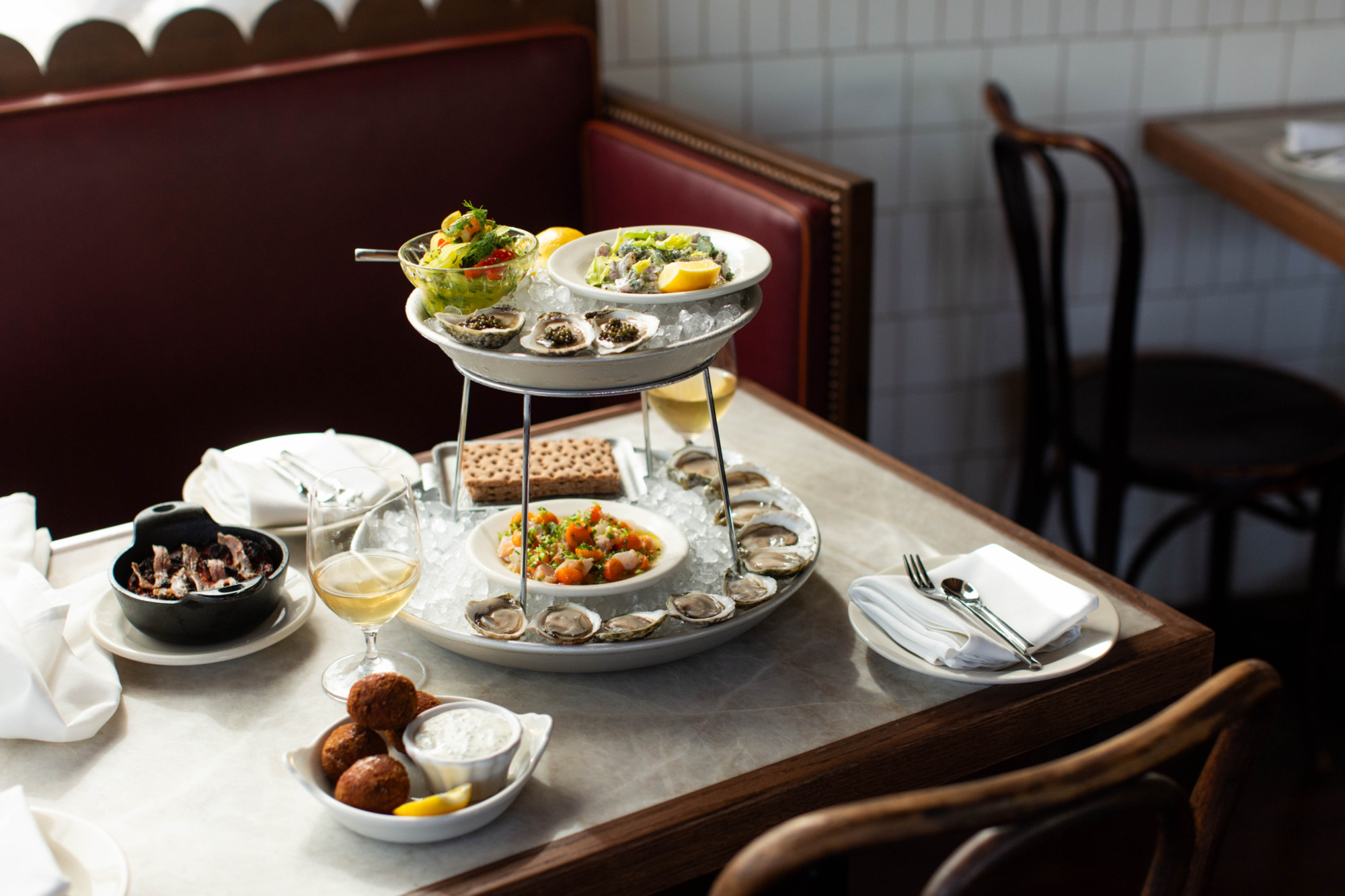
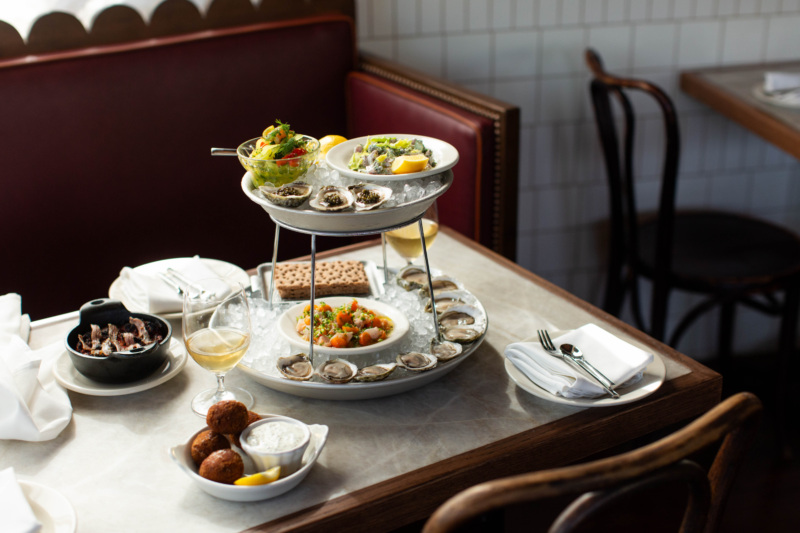
1. Don’t call it a Southern restaurant.
Queen St. refers to one of Charleston’s main drags. And yet Kolender insists that although the restaurant is Southeast-inspired, it’s not Southern in the traditional sense. “Our pantry leans Southern—we use a lot of cornmeal and sherry and blue crabs and mace and pecans,” he says, “But we’re using so much product from the West Coast,” he adds, from seafood to produce.
Certain dishes are classically Southern, such as hushpuppies, she-crab soup, and tomato-anchovy bread pudding. Other dishes pull from Lowcountry history but are not commonly found on current-day restaurant menus in the South, such as fried flounder with California apricot agrodolce and grilled swordfish in sherry butter sauce with charred lemons and shallots (inspired by a Chicken Hemingway recipe in Charleston’s Junior League Cookbook).
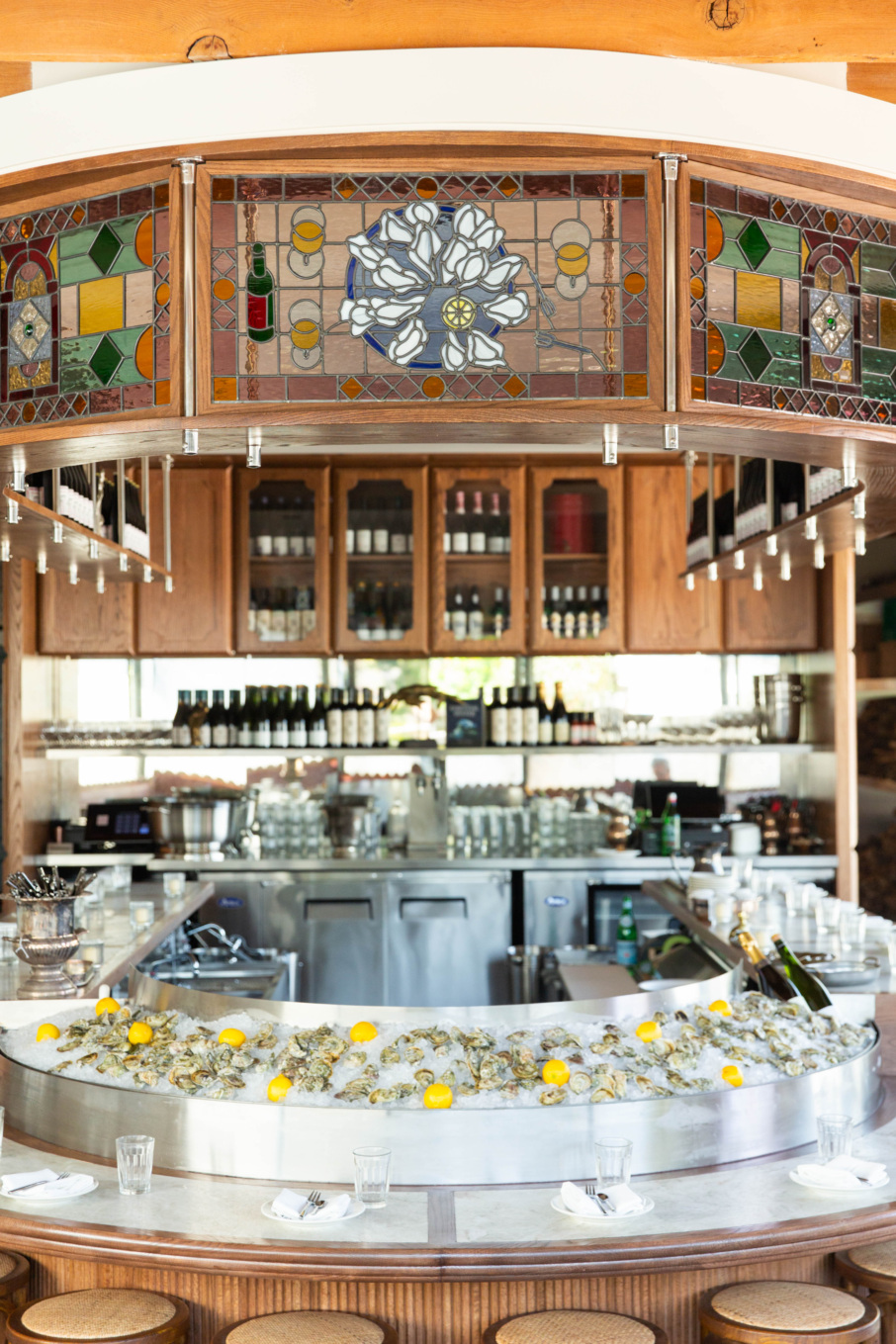
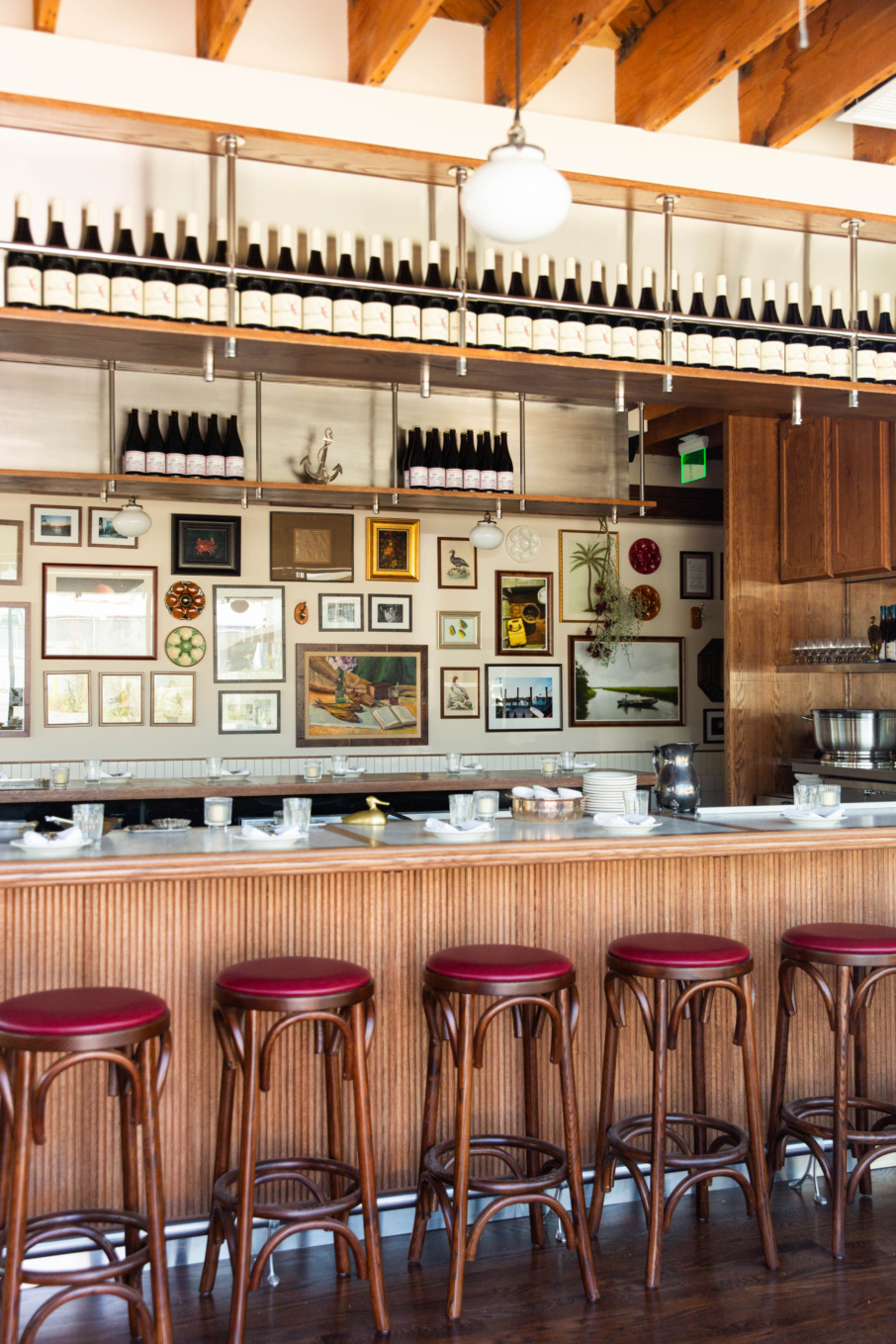
2. Queen St. occupies a former 1940s auto body shop.
Kolender and his team were able to build the restaurant from the ground up alongside the owner of the building, who had purchased the former auto body repair shop with the intent to rehabilitate it. They worked with Wick Design & Architecture to bring it up to date and craft a classic yet contemporary-feeling raw bar and grill. The result is a handsome space that boasts exposed wood ceilings, steel bay windows, vintage lighting fixtures, and a wraparound dark red leather banquette. Outside, there’s a patio with four tops and room to have a drink while you wait for your table.
3. The oyster bar is framed by custom stained glass.
The stained glass hanging over the U-shaped bar, which was designed by Alyssa Zack and features shucked oysters and glasses of wine, is one of several fun details that permeate the space. There’s also a gallery wall filled with pictures of marshes in Charleston taken by Kolender and his friends, still life paintings from Zack, and vintage oyster plates. In the bathroom, you’ll find a selection of framed old-school recipes, like a particularly delightful one for Breakfast Shrimp.
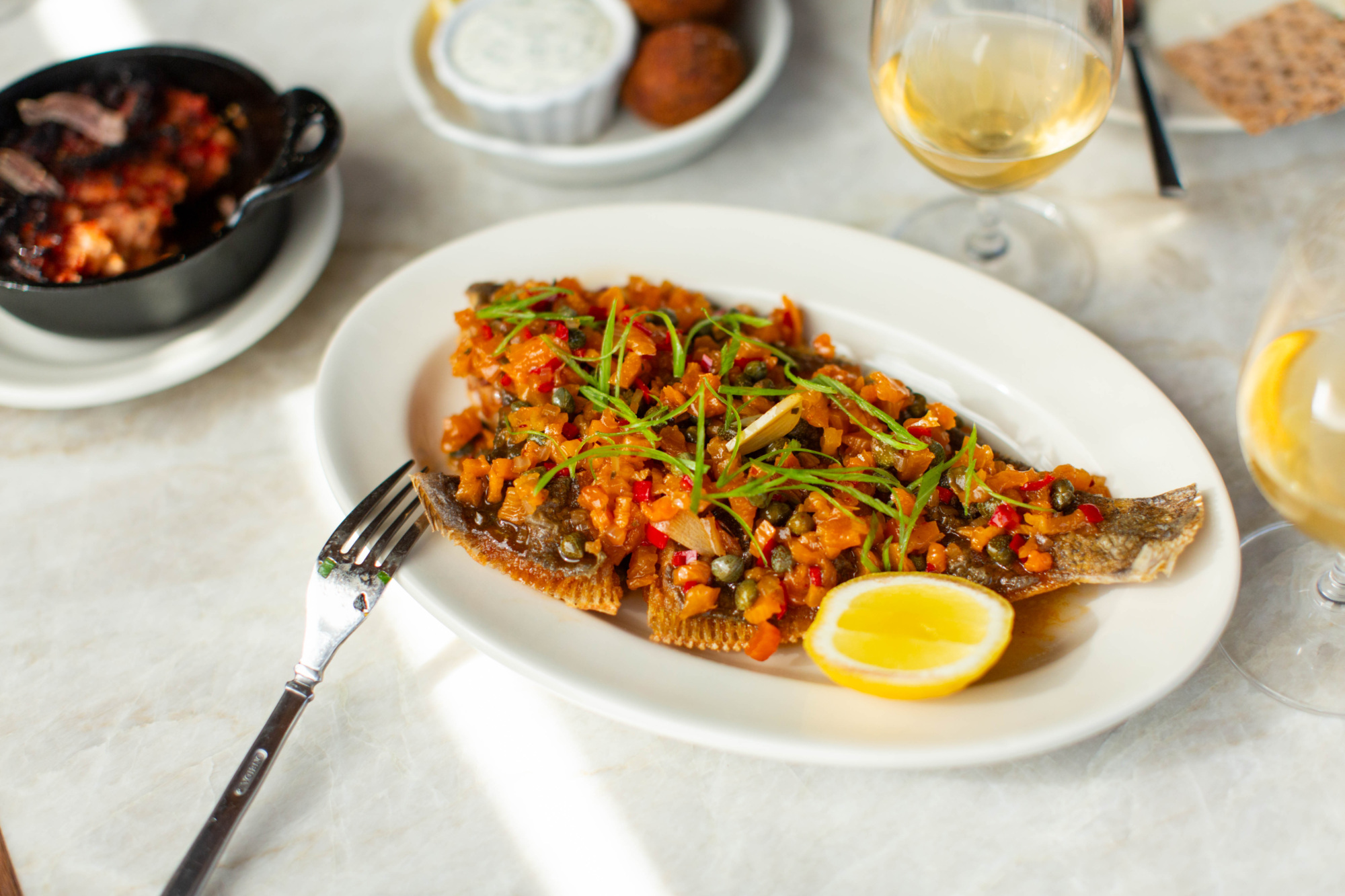

4. To drink, there are crisp white wines, Guinness on tap, refreshing non-alcoholic beverages, and sherry.
Like Found Oyster, Queen St. only has a beer and wine license, no liquor. “But we’re going to be able to showcase a lot more wine,” says Kolender. The selection of white Burgundies is a highlight of wine director Evelyn Goreshnik’s menu, which focuses on light, mineral-driven wines to pair with the food. Beer-wise, there is Pilsner Urquell and Guinness on tap and local beers by the can and the bottle. For non-alcoholic options, Ghia’s lime and salt spritz is on the menu, as is iced tea. Finally, what Kolender calls “a pretty strong after-dinner program” features sherries and Madeiras served in chilled glassware.
5. The pecan pie is Kolender’s grandmother’s recipe.
Kolender is a third-generation Charlestononian, and some of Queen St.’s recipes are inspired by his grandmother’s cooking, which pulls from his family’s European Jewish roots. The pecan chocolate derby pie is one, and the resulting sweet looks more like a tart than a typical pecan pie. The other dessert is a strawberry sundae, reminiscent of an Eton Mess, with McConnell’s ice cream, housemade strawberry rum sauce, cracked pieces of meringue, and salted whipped cream—a sweet ending to a proper Southern-accented feast.
Emily Wilson is a Los Angeles-based food writer from New York. She has contributed to Bon Appétit, Eater, TASTE, The Los Angeles Times, Punch, Atlas Obscura, and more. Follow her on Twitter and Instagram. Follow Resy, too.


